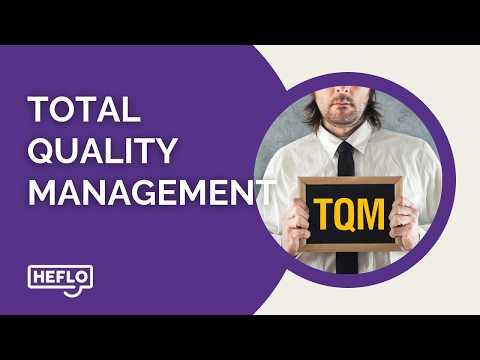People, Processes, and Technology: The Backbone of Sustainable Success

In an era where businesses must adapt quickly or risk falling behind, mastering the synergy between People, Processes, and Technology is no longer optional—it's essential. Aligning these three pillars unlocks greater efficiency, sparks innovation, and builds resilience.
Understanding the Three Pillars of Success
The concept of aligning people, business operations, and technological tools refers to the foundational triad that supports every successful transformation, whether operational, digital, or cultural. Let's break it down:
💜 People: The human element—employees, customers, and stakeholders—who drive and experience change.
🔍 Processes: The structured workflows and systems that define how work gets done.
🛠️ Technology: The tools and platforms that enable individuals and workflows to perform at their best.
Balancing these elements is critical. Without skilled people, procedures lack adaptability. Without streamlined operations, individuals face inefficiencies. Without the right digital solutions, both struggle to scale.
Visualizing the Connection
The diagram below illustrates how People, Processes, and Technology interact to create adaptable operations, enhanced performance, and scalable efficiency—all driving transformation.

Why People Matter Most
Individuals are the catalysts of change and innovation. No matter how sophisticated your tools or how detailed your workflows, success ultimately depends on those executing the vision.
Key considerations for empowering teams:
- Invest in continuous training and development.
- Foster a culture of collaboration and ownership.
- Align roles and responsibilities with individual strengths.
Organizations that prioritize their workforce lay the groundwork for smoother process adoption and more effective use of digital resources.
Streamlining Processes for Greater Efficiency
Workflows are the blueprint for how value is created and delivered. When outdated or poorly designed, they cause bottlenecks, errors, and frustration.
Best practices for optimizing business operations:
- Map workflows visually to identify pain points.
- Standardize best practices while allowing room for improvement.
- Continuously review and refine based on feedback and performance data.
Effective management ensures that the right tasks happen at the right time, by the right people, using the right tools.
🧠 Want to learn more?
Check out our detailed guide on How to Streamline Business Processes for Better Efficiency and discover actionable strategies to simplify workflows, eliminate bottlenecks, and enhance productivity.
Leveraging Technology for Competitive Advantage
Digital solutions should be enablers—not barriers. When chosen and implemented wisely, they empower teams and workflows to achieve outcomes that were previously impossible.
Smart approaches to adopting technological tools:
- Prioritize integration with existing operations.
- Choose scalable solutions that grow with your business.
- Focus on user experience to encourage adoption.
By strategically aligning tools with business goals, organizations enhance productivity, improve decision-making, and accelerate growth.
🛠️ Practical Example:
Streamlining processes often requires the right technology to automate repetitive tasks, standardize workflows, and increase agility.
Tools like HEFLO provide intuitive process modeling, automation features, and cloud-based collaboration to help organizations streamline operations and drive digital transformation effectively.
Quick Self-Assessment: Are Your People, Processes, and Technology Aligned?
Before diving deeper into transformation initiatives, it's critical to assess your current state. Use this quick checklist to evaluate how well your teams, workflows, and tools are working together:
💜 People
- Are employees trained and empowered to improve processes?
- Do teams collaborate effectively across departments?
- Is there a culture of continuous learning and innovation?
🔍 Processes
- Are workflows clearly documented and standardized?
- Do operations allow for agility and adaptation when needed?
- Are inefficiencies and bottlenecks regularly identified and addressed?
🛠️ Technology
- Does technology support and enhance business workflows?
- Are tools user-friendly and integrated into daily operations?
- Is your tech stack scalable to meet future needs?
🔍 If you answered 'no' to any of these questions, it may be time to rethink how your organization balances its core pillars to drive sustainable success.
Real-World Examples of Aligning People, Processes, and Technology
1. Toyota: Empowering People Through Lean Manufacturing

Toyota is often cited as a gold standard for harmonizing workforce, operational practices, and technological support. Through its famous Toyota Production System (TPS), the company revolutionized manufacturing by putting people at the center of continuous improvement.
🧑 People: Toyota fosters a culture of "Kaizen," encouraging all employees to suggest improvements and empowering them to act on quality issues immediately.
🔄 Processes: The TPS standardized workflows to eliminate waste and enhance efficiency through Just-in-Time production and Jidoka.
💻 Technology: Tools are introduced carefully to support, not replace, human insight, making automation an enhancer rather than a disruptor.
🔍 Result: A world-class reputation for quality, efficiency, and adaptability.
Want to learn more about the principles behind Toyota's excellence in quality and efficiency? Watch our full video on Total Quality Management (TQM).

2. Netflix: Technology-Driven Innovation with Agile Processes

Netflix’s transformation from DVD rentals to global streaming dominance exemplifies strategic integration of talent, workflows, and cloud technology.
🧑 People: Netflix empowers talent with a "freedom and responsibility" culture that promotes rapid decision-making and ownership.
🔄 Processes: Agile methodologies allow teams to innovate quickly, encouraging experimentation and learning from failures.
💻 Technology: Netflix’s advanced cloud infrastructure and recommendation algorithms scale seamlessly to millions of users.
🔍 Result: Netflix outpaced competitors by mastering the balance between human innovation, efficient operations, and technological advancement.
🎧 Want to explore Agile beyond IT?
Inspired by how Netflix uses Agile methodologies to drive innovation?
Dive deeper into how Agile frameworks like Scrum, Kanban, and Lean are being used beyond IT to boost productivity and adaptability across teams.
Listen to our ProcessCast episode "Agile for Non-Tech Teams: Boost Productivity & Embrace Change" now on Spotify!
The Symbiosis of People, Processes, and Technology
When individuals, workflows, and digital tools are properly integrated, each strengthens the other:
- Trained and motivated people improve and adapt processes.
- Well-designed operations make it easier for teams to succeed.
- Technology amplifies human and process capabilities, creating new possibilities.
Ignoring any element risks undermining the whole system. Leaders must view this triad not as separate initiatives but as a single, interconnected strategy.
Practical Roadmap: Strengthen Your People, Processes, and Technology
Ready to take action? Here's a simple roadmap to begin:
🛠️ Step 1: Map Critical Workflows Identify and visually map your organization's key operations to uncover inefficiencies and opportunities for improvement.
💜 Step 2: Assess Organizational Capabilities and Readiness for Change Evaluate the skills, engagement, and adaptability levels within your teams. Conduct a change readiness assessment to anticipate challenges and proactively address resistance.
🔍 Step 3: Evaluate Your Technology Stack Analyze your current tools and platforms. Are they user-friendly, integrated, and scalable? Ensure new technologies are introduced with clear communication and support to facilitate adoption.
🔄 Step 4: Apply Change Management Techniques Use structured methodologies like ADKAR, Kotter's 8-Step Process, or Lewin's Change Management Model to guide transformation initiatives. Engage stakeholders early, communicate transparently, and provide continuous support.
🚀 Step 5: Monitor Progress and Adapt Establish KPIs and feedback loops to measure progress. Celebrate early wins, address emerging resistance quickly, and refine strategies based on real-world insights to sustain momentum.

Final Thoughts: Building Success Through People, Processes, and Technology
Sustainable success comes from balancing and harmonizing individuals, workflows, and tools. It's not about favoring one over the others—it's about orchestrating all three to achieve excellence.
If you're serious about improving your organization's performance, start by assessing how well your people, operations, and technologies are aligned. Strengthening this foundation today will prepare you for the challenges and opportunities of tomorrow.
👉 Want to dive deeper? Explore our other articles on operational excellence, digital transformation strategies, and the evolution of digital processes. Check out our dedicated article on What Are Digital Processes and How They Transform Organizations!
